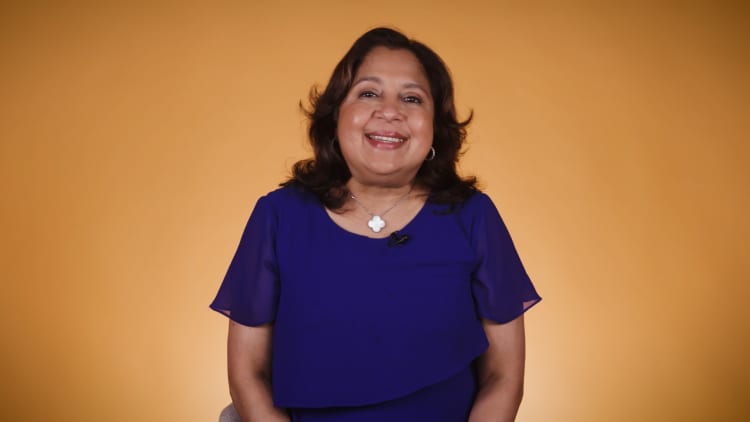Many people might describe certain foods like chocolate, cheese or potato chips as "guilty pleasures." As a nutritionist, however, my goal is to help folks eliminate guilt from their relationship with food.
I tell everyone I work with that they can have all the things they love as part of their diets. My top rule is to stop categorizing food as "good" or "bad." Instead, practice portion control and work towards viewing food as a source of neutral fuel for your body.
So rather than focusing on what you shouldn't eat, allow yourself portions of the foods you like, and enjoy the pleasure of eating them. When you adopt this mindset, you'll have more satisfaction and less stress in your life.
How to enjoy your favorite foods without guilt
A big part of eating in moderation is portion size. If you want a single serving of potato chips, for example, it's going to be one to two ounces. The same goes for cheese and chocolate.
Of course, if you have serious health conditions, check with your doctor first.
If possible, look for the highest quality and most natural ingredients. There are are a number healthy and delicious ways to enjoy these foods:
1. Chocolate-covered fruit
Chocolate-covered fruit can satisfy a sweet craving and give you an extra boost of nutrients.
In particular, berries — such as strawberries, blueberries, and raspberries — contain fiber, polyphenols and antioxidants, and eating more of them can help lower your risk of heart attack and type 2 diabetes.
I love making dark chocolate blueberry bark so I can break off a piece whenever I want a sweet dessert or snack.
2. Single-serving bags of chips
When I open a full-sized bag of chips, I can lose all sense of what a single serving is. That's why I've switched to one-ounce mini bags of chips, as they're usually perfectly portioned out to be a single serving.
They also tend to come in variety packs, so you can switch up the flavors when you have a crunchy craving.
3. Eat cheese strategically
We've all been tricked into thinking cheese is bad for us, but that's really not the case. Cheese is salty and can be high in fat, but it also contains important vitamins and minerals:
- Vitamins A, B6, B12, D and K
- Calcium
- Potassium
- Zinc
- Magnesium
The American Heart Association recommends consuming 3 cups of fat-free or low-fat dairy foods a day, which includes milk, yogurt and cheese. A serving of natural cheese, like cheddar, is about the size of a pair of dice.
You can get creative with how you add cheese to your meals. I like to shred a bit over pasta or salad at dinner, have a string cheese as a snack, or mix some in my eggs for breakfast.
4. Share or split when dining out
Eating with others is the perfect opportunity to practice moderation. My fiancé and I love going out to dinner for date nights, and we often share entrees or desserts.
This gives us both the satisfaction of enjoying a cheeseburger and fries, pizza, or an ice cream sundae without going overboard.
And when I'm dining solo, I'll eat half of my entrée and bring the other half home in a takeout container. Think of leftovers for the next day as a way to enjoy a delicious meal for twice as long, by splitting it with your future self.
Lauren Armstrong is a registered dietitian and personal nutrition coach. Formerly, she worked as a nutritionist for the Women, Infant and Children (WIC) program. Lauren received her bachelor's degree in dietetics from Western Michigan University, and has written for several publications, including Livestrong and HealthDay.
Don't miss:
- My 95-year-old Japanese grandfather is a former cardiologist—his 8 'non-negotiables' for a long, happy life
- Harvard gut doctor shares 4 foods that cause inflammation—and what she eats instead
- A fitness trainer shares the No. 1 exercise for a 'longer life'—'I do it every day'
Want to be smarter and more successful with your money, work & life? Sign up for our new newsletter here

Get CNBC's free Warren Buffett Guide to Investing, which distills the billionaire's No. 1 best piece of advice for regular investors, do's and don'ts, and three key investing principles into a clear and simple guidebook.


